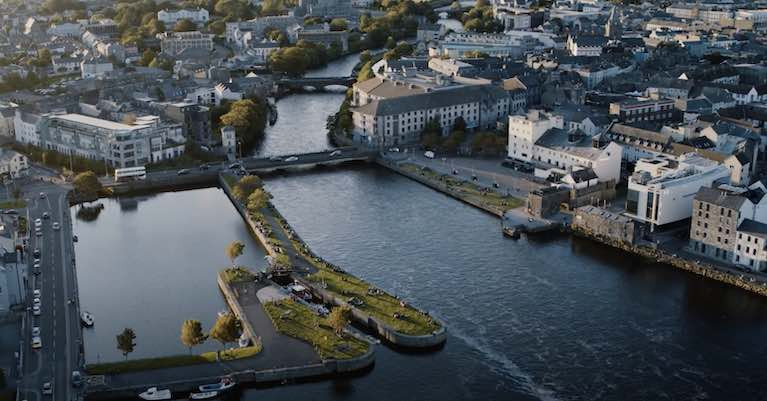Displaying items by tag: Claddagh Quay
Galway's Claddagh Quay Venue for "Mirror Pavilion"
Galway’s Claddagh Quay is the location for a 24-hour digital art exhibit which has been weather-proofed for the Atlantic elements.
Climate crisis is the theme of “Mirror Pavilion”, which was designed by John Gerrard as Galway 2020 European cultural capital commission.
Galway International Arts Festival (GIAF) engaged Gerrard, an award-winning Irish international artist known for his site-specific work, and he has spent the last two years on the project.
 John Gerrard's Mirror Pavilion Photo: Colm Hogan
John Gerrard's Mirror Pavilion Photo: Colm Hogan
Entitled “Corn Work”, the exhibit will recall the history of grain milling on one of Europe’s fastest flowing rivers for its short length.
The seven-metre cubed structure is clad in a highly reflective mirror on three sides, while a fourth high resolution LED wall displays a series of digitally created and choreographed characters.
Named the Straw Boys, the figures perform a “symbolic wheel of production”.
The “Mirror Pavilion” is a free, non-ticketed event, running at the Claddagh until September 26th.
It aims to provide a mirror image to “Leaf Work”, another virtual world created by Gerrard for the pavilion in a second location - Derrigimlagh bog in Connemara - from October 11th to 31st.
Derrigimlagh Bog was the transmission site for the first transatlantic radio signal from the Marconi station in 1907, and landing place for Alcock and Brown’s first-ever transatlantic plane crossing in 1919.
The Connemara exhibit is billed as a “response to the solar cycle and changing temperatures, their movements in tandem with the changes of the seasons”.
The “Mirror Pavilion” will be “presented within, and cognisant of, Government Covid-19 guidelines”, GIAF states.
Compliance with the guidelines, social distancing and limited attendance is also emphasised for Galway 2020’s re-imagined programme from September to next March.
As part of the 2020 programme, seven artists, writers and composers from across Europe have produced a series of standalone artworks for exhibition and radio broadcast, entitled Aerial/Sparks.
The artwork was inspired by participation in research expeditions onboard the Marine Institute Ireland’s RV Celtic Explorer.
Galway City Museum is hosting a multi-disciplinary exhibition relating to archaeology, architecture, cultural landscapes associated with islands, including “never-before-seen material” from the 1990s archaeological excavations at Dún Aonghasa on the Aran island of Inis Mór.
Artist John Gerrard will speak to GIAF artistic director Paul Fahy in a live-streamed event from Galway City Museum at 6 pm on Thursday, September 3rd.





























































